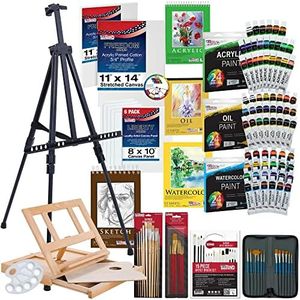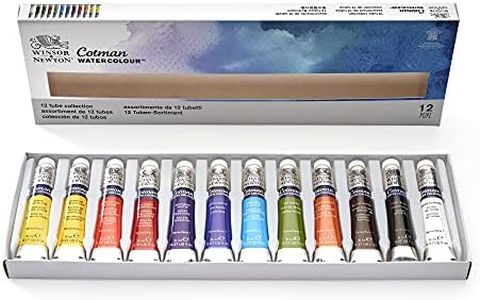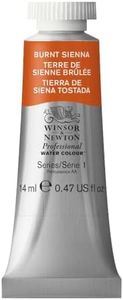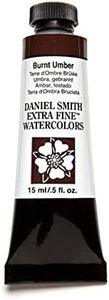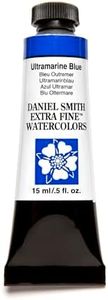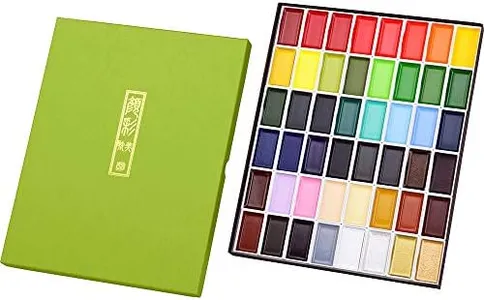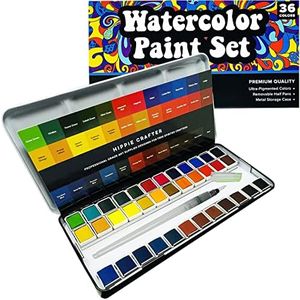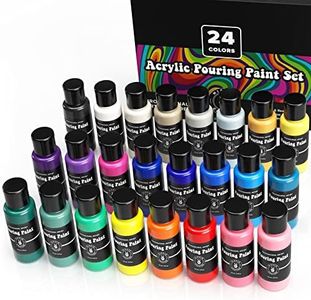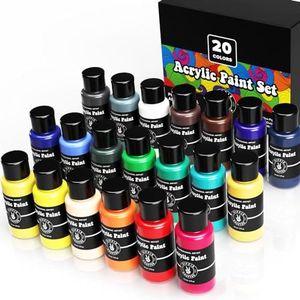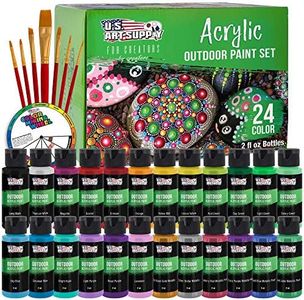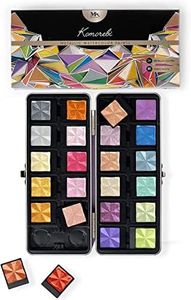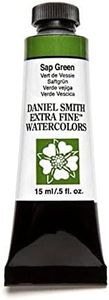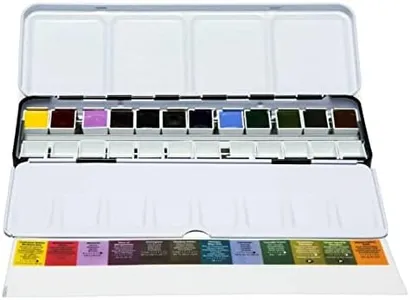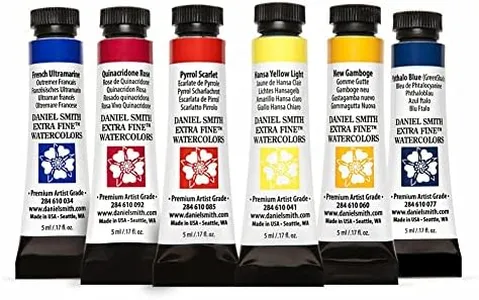10 Best Watercolor Paints 2025 in the United States
Our technology thoroughly searches through the online shopping world, reviewing hundreds of sites. We then process and analyze this information, updating in real-time to bring you the latest top-rated products. This way, you always get the best and most current options available.

Our Top Picks
Winner
Winsor & Newton Cotman Watercolor Paint Set, 12 Colors, 8ml (0.27-oz) Tubes
Most important from
1803 reviews
The Winsor & Newton Cotman Watercolor Paint Set is a solid choice for both beginners and hobbyists looking for quality at a reasonable price. The set includes 12 vibrant 8ml tubes, which cover a good range of colors necessary for various projects. One of its strengths is the good transparency and tinting strength, allowing users to create beautiful washes and layers in their artwork. Additionally, the paint is rated AA and A for lightfastness, meaning your artwork will retain its vibrancy over time, which is a significant plus for any artist.
However, since these paints are categorized as student-grade, they may not meet the expectations of professional artists who prefer higher pigment concentrations and richer hues found in professional-grade paints. The use of less expensive pigments does mean a slight compromise in some color richness compared to premium options.
In terms of form, the paint comes in tubes, which is convenient for mixing and controlling the amount used, especially for those who appreciate the flexibility of squeezing out the desired amount. However, some users might prefer pans for easier portability or storage. This watercolor set is particularly beneficial for artists working on paper and those who are learning the craft, as the user-friendly characteristics and vibrant colors help foster creativity. The Winsor & Newton Cotman set serves well for those looking to explore or enhance their watercolor skills without breaking the bank.
Most important from
1803 reviews
Winsor & Newton Professional Water Colour Paint, 0.47-oz Tube, Burnt Sienna
Most important from
149 reviews
The Winsor & Newton Professional Water Colour Paint in Burnt Sienna is a solid choice for artists looking for high-quality watercolor paint. One of its standout strengths is the quality; being a professional grade, it offers a wide choice of pigments known for their permanence and rich color. This specific product has an excellent lightfastness rating (AA), meaning it resists fading when exposed to light, which is crucial for artists aiming for long-lasting artwork. The paint comes in a 0.47-ounce tube, making it convenient for both indoor and outdoor use and suitable for various painting surfaces, primarily paper.
In terms of form, this product is in tube form, allowing for easy mixing and control over the amount used, which many artists prefer compared to pans. The transparency of the burnt sienna pigment is a plus for those who enjoy layering colors and achieving a depth in their artwork.
This watercolor paint excels in quality and is ideally suited for experienced artists seeking a reliable and vibrant watercolor option. However, it may not be the best fit for beginners or those on a tight budget, as professional-grade paints can be more expensive than student-grade alternatives.
Most important from
149 reviews
DANIEL SMITH 284600011 Extra Fine Watercolor 15ml Paint Tube, Burnt Umber, 0.5 Fl Oz (Pack of 1)
Most important from
344 reviews
The DANIEL SMITH Extra Fine Watercolor Paint Tube in Burnt Umber is a high-quality option tailored for professional artists. This product is known for its excellent lightfastness, meaning the colors are resistant to fading over time, which is crucial for artwork longevity. The paint is semi-transparent, allowing for layered washes and subtle details.
The tube form makes it convenient for mixing custom shades and controlling the amount of paint used, which is ideal for detailed work and large projects alike. For those looking for a broad palette, DANIEL SMITH offers an extensive range of over 240 colors, including unique and mineral-based options like the PrimaTek series. This specific Burnt Umber shade is appreciated for its warm, rich brown tone, which can be mixed to create a variety of effects.
However, it is worth noting that the price point may be higher compared to student-grade paints, which might not be suitable for beginners or casual hobbyists. Additionally, the semi-opaque quality may not be preferable for those seeking completely transparent washes. The tube contains 15ml of paint, which is a standard size for professional-grade watercolor tubes. This paint is best suited for serious artists who value high-quality materials and a wide color range for their watercolor paintings.
Most important from
344 reviews
Buying Guide for the Best Watercolor Paints
Choosing the right watercolor paints can greatly enhance your painting experience and the quality of your artwork. Watercolor paints come in various forms, qualities, and colors, and understanding these differences can help you make an informed decision. Here are some key specifications to consider when selecting watercolor paints, along with explanations to guide you through the process.FAQ
Most Popular Categories Right Now
